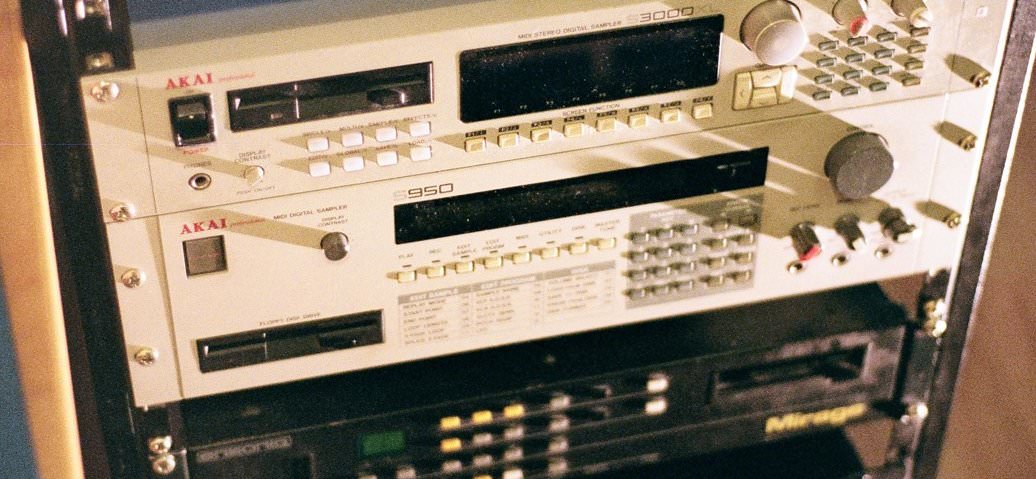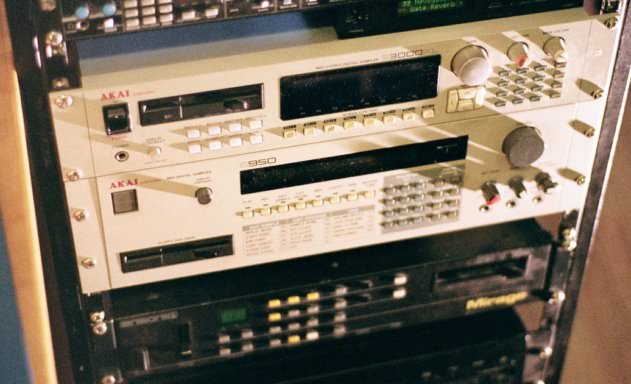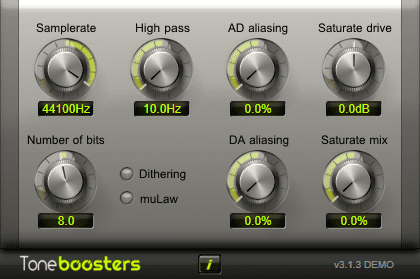Vintage flavours don’t just come from analogue gear. Bruce Aisher explores the technology behind classic vintage samplers and explains how to achieve similar results in your DAW.
Whilst it’s the analogue world that gets much of the coverage from retro fetishists, ‘digital vibe’ has its own place in the production environment. It may be a more recent phenomenon, but the way in which the limitations of early digital sampling technology manifest themselves in particular bits of kit has now become another one of the creative choices a producer can make. This extends from the perceived ‘grit’ of specific digital drum machines to the full-on dirt associated with low-resolution samplers. The fact that so many 80s and early 90s samplers played – and continue to play – a key role in the production of dance music means that their sound deserves consideration.
A Bit of Science
Before we dive in with some specific examples it’s worth running over some of the principles at play when dealing with digital audio. What’s happening inside classic samplers like the 8-bit Ensoniq Mirage or 12-bit Akai MPC60 to give them their distinctive sound?
To turn an analogue audio signal into its digital counterpart we must ‘sample’ (i.e. measure) it at regular intervals and turn the amplitude at each of these moments into a number. The speed with which we do this (the sample rate) determines the maximum frequency that can be captured and played back. Sampling theory states that in order to fully capture a continuously changing signal one must sample it at twice its maximum frequency – the so-called Nyquist frequency. So, assuming that the range of human hearing can extend up to 20 kHz (if you’re very lucky or very young), one must sample audio at 40 kHz in order to play this back fully. In reality, things can be somewhat complicated by the filtering that needs to be applied to keep aliasing artefacts (unwanted signals caused by the digitisation process itself) out of the final audio output.
The second important factor is the bit depth – the range of numbers used to capture the amplitude at each sample point. The larger the size of number used, the greater the dynamic range. This difference between quietest and the loudest points ultimately determines how much background noise will be present.
The dynamic range of human hearing is about 120 dB (for a further explanation of decibels and dynamic range, see our essential guide to levels) whilst 8-bit sampling only delivers 48 dB. CD quality 16-bit gives 96 dB and 24-bit gives a human-beating 144 dB.
Here we’re going to use Toneboosters‘ Time Machine plugin to process three different loops.
First, the original, unprocessed loops at full 24-bit, 44.1 kHz resolution:
Next, reduced to 8-bit, 44.1 kHz:
Down to 8-bit, 12 kHz:
And finally, 4-bit, 6 kHz:
Clearly, the later examples exhibit outright distortion rather than more subtle favouring, but the overall effect is clear: as we reduce the sample rate and bit depth, we bring out more character and crunch in the sound. The choice of source material will also make some audio artefacts or quality limitations more noticeable than others. The impact on the signal is not always desirable, but it can work incredibly well in some cases.
Of course, these simple examples only marginally approximate what happens when you use hardware samplers with low bit depths or sample rates, as circuits and implementations do vary considerably from one unit to the next (depending on application, cost and available technology). You can get a flavour of some of the approaches here.



11.02 AM
the mpc60 is a different kind on animal. it has 12bit non-linear sampling engine. not same as the s9xx series.
09.43 PM
The zoom sampletrak is my favourite for crunching sound. You can still get them cheap and you might just fall in love with the thing’s easy workflow and some cool effects.
04.35 PM
Big fan of the vintage sound! TR 707s, 909s, Oberheim DMX…love them all! Dabeull has a pretty sweet set up of them too:
http://frenchshuffle.com/2015/05/24/get-in-the-studio-with-dabeull-dastudio-10/
Seems like the vintage sound is definitely making a huge comeback in the contemporary music scene.
10.53 AM
Would recommend that you check out TAL Sampler for this kind of duties!
09.02 AM
Thanks for pointing out the AA filter on Decimort. I did’nt realise it was there. Used some of these techniques on my current project. Big up!